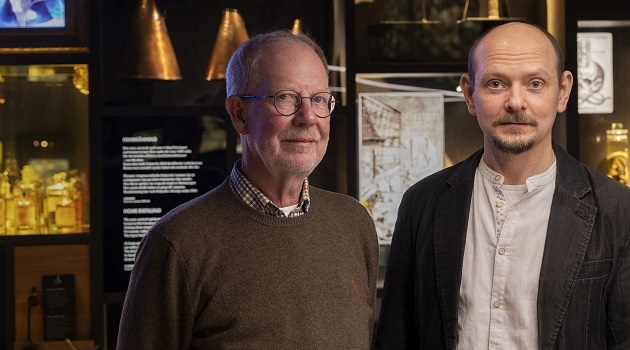Popular 18th-century medicine in a new form
Hello to Nils-Otto Ahnfelt, PhD pharmacist and visiting researcher at the Department of Pharmaceutical Biosciences. Together with the historian of science Hjalmar Fors, you have developed a reconstruction of the 300-year-old medicine Hjärnes Testamente in the form of a bitter schnapps. How did you come up with the idea of recreating an 18th-century medicine?
"I thought it sounded very exciting when Hjalmar Fors asked me if we should do it as a research project. Hjärnes Testament was famous in the 18th century and was considered something of a panacea. It spread across the world under names like Wunder-Kron-Essenz, Schwedenbitter and Swedish Bitter. Well into the 20th century, it was available in Swedish pharmacies and variants are still sold in health food stores.”
Hjärnes Testamente is a mixture of ten different plants, spirits and theriac, which alone contains some 70 ingredients. How has the reconstruction worked?
"We worked our way through various recipes that we could find in manuscripts and in Swedish and German pharmacopoeias from the 17th and 18th centuries. It wasn't that difficult. Finding raw ingredients for the composition was much more difficult. One of the ingredients, Theriaca andromachi, dates back to ancient Greece and tracing the names of all its ingredients was a challenge and some of the ingredients we didn’t manage. Still others had to be dropped for obvious reasons, such as viper meat and opium. We also found that many of the ingredients are used as spices in cooking even today and that a relatively small number of ingredients in the original recipe, such as opium and squill, can be considered to have pharmacological properties.”
What can the project tell us about the history of pharmacy?
"One of the more important conclusions is how strongly older drugs affect the senses, they very often had strong tastes and smells, both pleasant and awful. They also often had interesting tactile properties. For example, medicine could be given in a honey mash. There has been a major paradigm shift in pharmaceuticals, as these days they should ideally be both odourless and tasteless.”
How did you come to launch a commercial side project, making Hjärnes Testamente available to the public as an alcohol flavour?
"We knew from the start that we had a great story. Then we discovered that the more we learned about the art of old pharmacy, the better our products tasted. So we wanted to try and see if we could make it really delicious. Through UU Innovation, we received funding to finance a sensory analysis at Kristianstad University, which gave us a good basis for how to further develop the flavours and aromas."
How would you describe the taste?
"Complex! Like an explosion of aromas and flavours with several different shades of bitterness and a touch of sweetness. In the 18th century, it was sold in small bottles and was to be taken as drops in small quantities, for example in tea or brandy. Drinking it straight is very bitter. Our Hjärnes Testament is pre-mixed in alcohol and has no medicinal properties.”
Sara Gredemark
Facts
Hjärnes Testamente is produced by Antidotarium AB, founded in 2017 and operated by Nils-Otto Ahnfelt, Hjalmar Fors, and Calle Ljungström.

